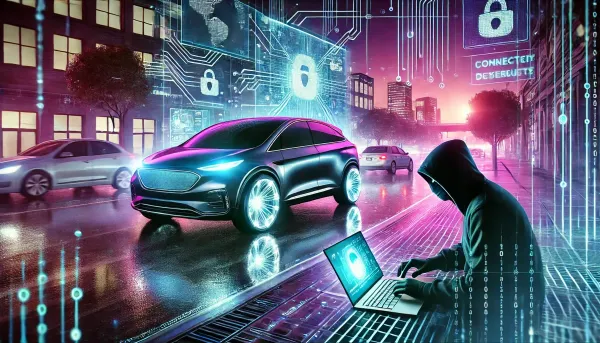
Cybersecurity Risks in Connected Vehicles: The Kia Case
The growing prevalence of connected vehicles has undeniably transformed the automotive landscape, introducing a level of convenience and functionality previously unimagined. However, this shift towards digital integration hasn’t come without drawbacks, particularly concerning cybersecurity. A recent case involving critical vulnerabilities in Kia vehicles unearths alarming facets of vehicle security and the potential implications of a cyber-attack. This blog post elaborates on the vulnerabilities identified, their technical underpinnings, and the pressing need for the auto industry to bolster cybersecurity defenses.
A team of white-hat hackers, led by Sam Curry, unveiled a pivotal security flaw in Kia’s web portal and associated mobile applications that could potentially compromise vehicles merely by utilizing the vehicle’s license plate number. Reported in July 2024, the vulnerabilities exposed models from 2014 to 2025, impacting millions of cars with advanced connectivity features.
Technical Mechanics
The attack chain exploited flaws in the registration and token generation process of the Kia dealership’s API. The series of unauthorized commands allowed attackers to conduct the following:
- Remote Access: Attackers could generate valid access tokens, enabling them to interact with dealer APIs.
- Personal Data Exposure: Alongside vehicle control, sensitive data such as owners’ names, emails, and phone numbers were accessible.
- Vehicle Control: Command functions available to attackers included remote starting/stopping the engine, geolocating the vehicle, and activating onboard systems such as cameras, lights, and horns.
As noted, the research team built an exploit demonstration tool to illustrate the ramifications of the vulnerabilities. After entering the license plate number, an attacker could compel the vehicle to execute commands within a mere 30 seconds.
The Vulnerability Mechanism
The exploitation derived from improper handling of HTML inputs in the user registration processes, which permitted unauthorized user identity creation. By falsely registering as a dealer, attackers could generate access tokens for the dealer portal, retrieve associates’ information, and adjust vehicle ownership status to enable themselves as authorized users.
Key Steps of the Attack
- Fake Dealer Registration: Attackers register as a dealer, creating robust access points into the Kia systems.
- API Exploitation: Utilize HTTP requests to obtain owner information and implement unauthorized changes.
- Vehicle Control: Once granted access, attackers could control vehicle functionalities without the knowledge of the current owner.
Impact and Response
Given the scale of this vulnerability, prescriptive actions were necessitated. Following responsible disclosure practices, Kia patched the flaw swiftly, mitigating potential exploitation before it could escalate. Immediate response to these vulnerabilities underlines the industry’s recognition of cybersecurity relevance in the context of vehicle safety.
Industry Implications
As the incident exposed, the cybersecurity posture of the automotive sector is facing unprecedented scrutiny:
-
Evolving Attack Surfaces: Cybercriminals are adapting their strategies, moving from physical theft to sophisticated digital exploitation. The accessibility of personal data tied to vehicle ownership compounds the potential for malicious activities.
-
Regulatory Considerations: With increasing digitization, automotive regulations may evolve to enforce rigorous cybersecurity measures, akin to existing mandates in the IT sector. The National Highway Traffic Safety Administration (NHTSA) may step up by establishing more thorough cybersecurity protocols for vehicle manufacturers.
-
Consumer Awareness: The incident illustrates transformative implications for consumer perceptions of vehicle security. Awareness campaigns about risks and countermeasures are crucial in the ecosystem design for connected cars.
Next Steps for the Automotive Industry
Automakers must prioritize cybersecurity measures to preemptively mitigate vulnerabilities and protect customer trust, particularly in the wake of incidents similar to Kia’s. Recommendations include:
- Regular Security Audits: Continually assess and fortify software systems and third-party APIs against known vulnerabilities.
- Implementation of Zero Trust Models: Enhance security measures around vehicle access and data retrieval through rigorous identity verification processes.
- Education and Transparency: Manufacturers should encourage consumer awareness about cyber risks and available countermeasures.
Conclusion
The Kia incident serves as a wake-up call, shedding light on the intricate cybersecurity challenges facing the automotive industry. As vehicles become increasingly interconnected, the necessity for robust cybersecurity practices is paramount. A proactive, rather than reactive, approach to securing automotive technology is essential for safeguarding not only the vehicles themselves but also the sensitive personal information tied to them.
The road ahead requires collaboration among manufacturers, security researchers, and regulators to foster a safer digital ecosystem for connected vehicles.